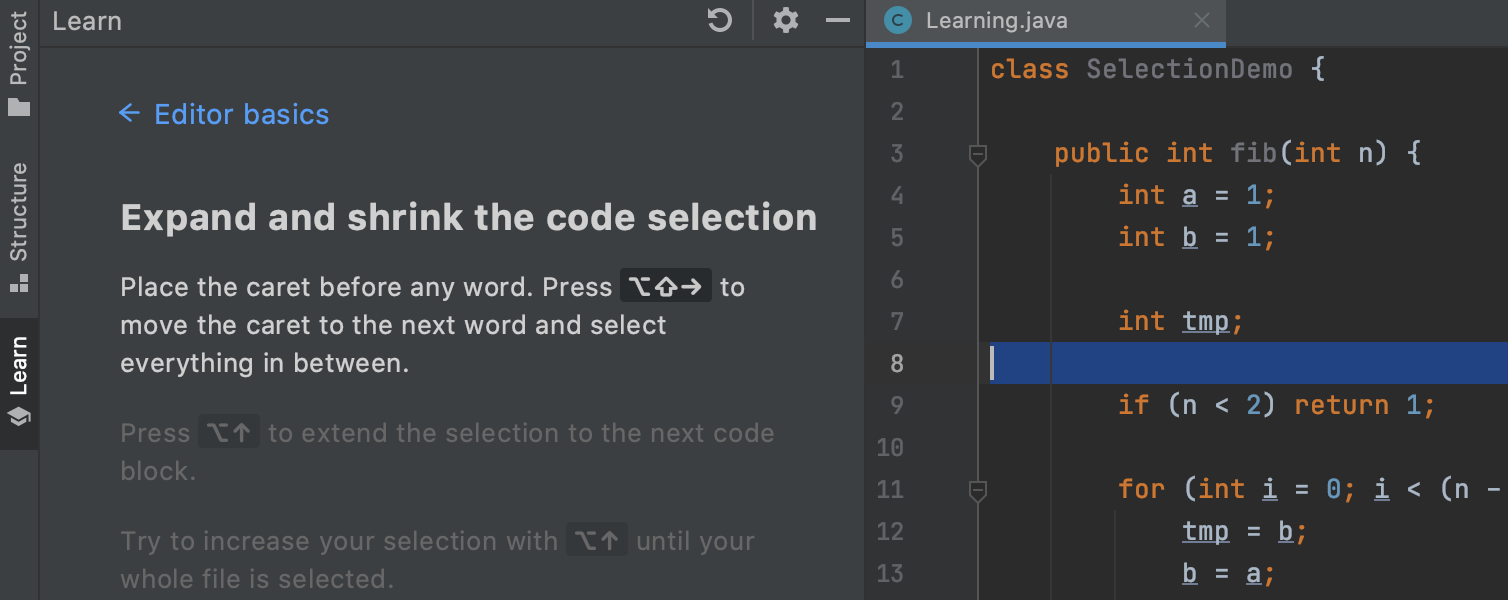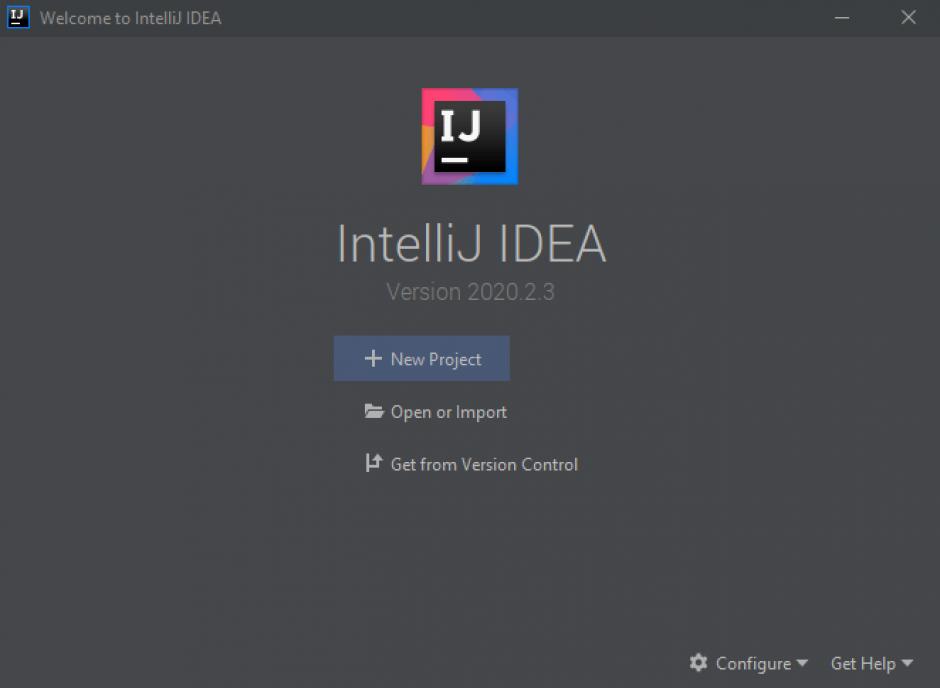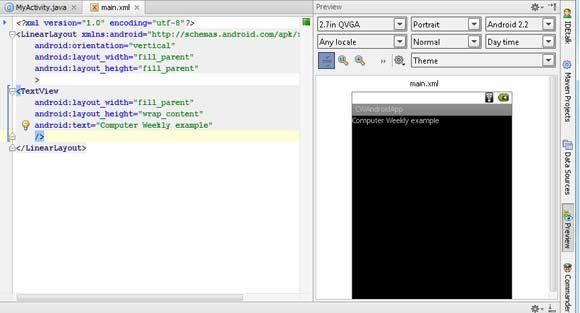
- #INTELLIJ IDEA COMMUNITY HOW TO#
- #INTELLIJ IDEA COMMUNITY INSTALL#
- #INTELLIJ IDEA COMMUNITY ARCHIVE#
- #INTELLIJ IDEA COMMUNITY PC#
- #INTELLIJ IDEA COMMUNITY LICENSE#
Next thing we need to do, is to provide an ARM binary of fsnotifier. Mv /usr/share/idea-IC-141.1010.3 /usr/share/ideaĬreate a symbolic link to start IDEA from command line: ln -s /usr/share/idea/bin/idea.sh /bin/idea Unpack and then delete the downloaded archive: tar -xf ideaIC-14.1.3.tar.gz -C /usr/share/ It’s possible to download IDEA distributive (for Linux) directly to Raspberry Pi (consider using the latest version): wget
#INTELLIJ IDEA COMMUNITY INSTALL#
To install IDEA on Raspberry Pi, we need to extract the distributive, update a native file system watcher binary and to select a proper file system access layer. This confirms that the required version of Java is correctly installed. Java HotSpot(TM) Client VM (build 25.33-b05, mixed mode) Java(TM) SE Runtime Environment (build 1.8.0_33-b05)


Run java -version again, the output should be like: java version "1.8.0_33" Ln -s /usr/lib/jvm/java-8-oracle/bin/javac /bin/javac
#INTELLIJ IDEA COMMUNITY ARCHIVE#
Rename the resulting directory: mv /usr/lib/jvm/jdk1.8.0_33 /usr/lib/jvm/java-8-oracleĭelete the original archive file: rm Ĭreate symbolic links to binaries: ln -s /usr/lib/jvm/java-8-oracle/bin/java /bin/java Unpack the distributive: tar -xf -C /usr/lib/jvm path.Ĭreate a directory to hold the JVM: mkdir /usr/lib/jvm Alternatively, you may simply copy the file to the boot partition on the SD card (which uses Windows-friendly, FAT file system) and then access the file via /boot/. Then upload the file to your Raspberry Pi via SSH (use appropriate version / host / user parts): scp Windows, it’s possible to use pscp from Putty for that purpose.
#INTELLIJ IDEA COMMUNITY LICENSE#
Open the page in a browser, accept the license and download the distributive. If the output contains “Zero VM” or “interpreted mode”, it’s better to use package manager to remove all existing Java packages (*jdk, *jre) from the system before proceeding.įirst, we need to obtain JDK 8 for ARM from Oracle’s site. If the output is “command not found” than there’s no Java installed (preferable). We can determine installed Java version by running: java -version in Debian, in Arch Linux, etc.) to switch Java implementations, yet we’ll not rely on them and will use plain and simple approach (which is also distributive agnostic). Linux distributives often provide dedicated utilities (e. While I really appreciate that open-source implementation of the Java Platform, it currently offers no just-in-time compiler on ARM systems, so it’s too slow for our purpose. Some Linux distributives come with JVM pre-installed, however that JVM is usually provided by OpenJDK package.

Otherwise, you may simply extract the downloaded Oracle JDK to jre subdirectory within IDEA installation (see below), and IDEA will use it as a bundled runtime. While IDEA platform itself depends on JVM runtime, this step is only needed if you plan to use JVM-based languages (like Scala, Clojure, Kotlin, etc.). Some of the commands will require root privileges, so either login as root user or use sudo to start an interactive shell via sudo -i. Update: we’ve fixed the incompatibilities, so IDEA 15 (or later) should be able to run on ARM architecture (including RaspberryPi) out-of-the-box.

Small, but essential modifications that enable IntelliJ IDEA to run on ARM systems, like Raspberry Pi (you may use the same techniques for other ARM-based microcomputers). Oracle JDK 8 for ARM (with HardFP, JIT and server VM), which provides >10X performance boost (comparing to Zero VM from OpenJDK).
#INTELLIJ IDEA COMMUNITY PC#
Obviously, it’s unreasonable to expect desktop-like performance from such a device, however I happen to successfully use a similar environment on EEE PC which was hardly faster. While it was initially intended to be just a “proof of concept”, it turned out that we were able to open the Scala plugin project itself (which is pretty large, and includes all IDEA CE sources) and to comfortably use this setup for most feature demonstrations. Nevertheless, in reality, Rasperry Pi can do much, much more than blinking a LED.Īfter trying out Scala on Raspberry Pi for some time, I configured my Rasperry Pi to run IDEA & Scala plugin for the recent ScalaDays conference. Raspberry Pi boards are incredibly small, so it’s hard to believe that those devices are apt for such a task. The instructions are also applicable for other IDEA-based IDEs like P圜harm, RubyMine, PhpStorm, WebStorm, CLion, etc.Īt first, the idea of installing a full-fledged, contemporary IDE on Raspberry Pi may seem unrealizable.
#INTELLIJ IDEA COMMUNITY HOW TO#
This article shows how to install IntelliJ IDEA on Raspberry Pi.


 0 kommentar(er)
0 kommentar(er)
